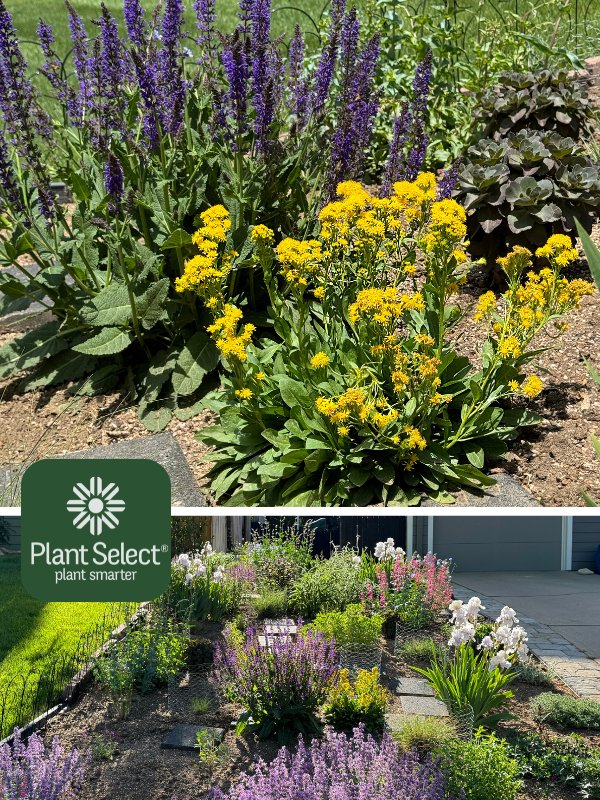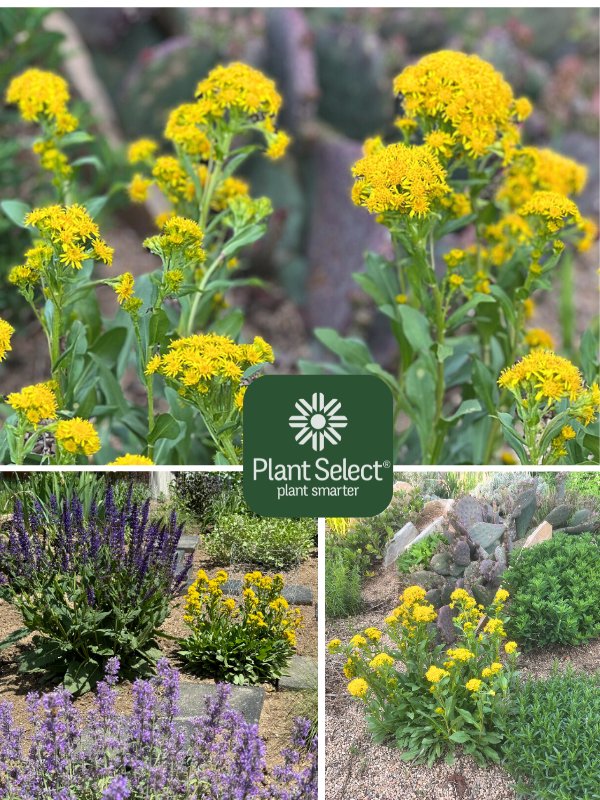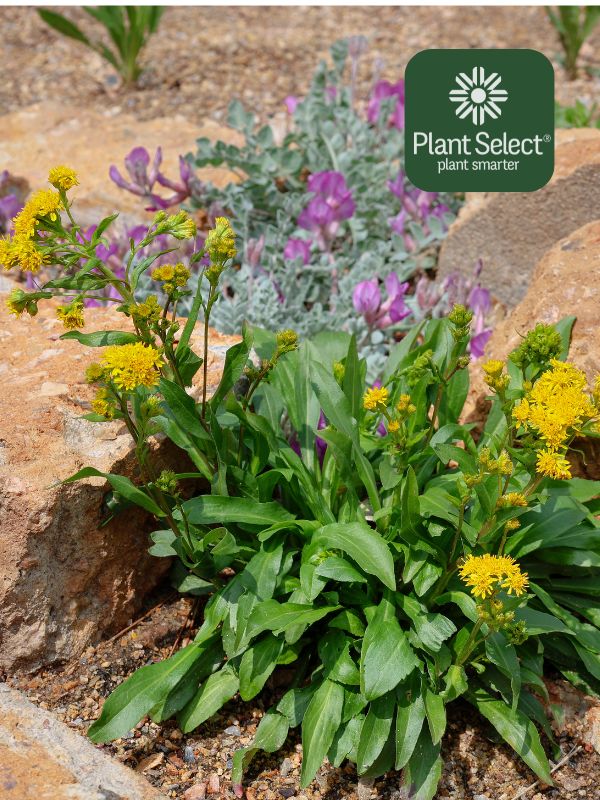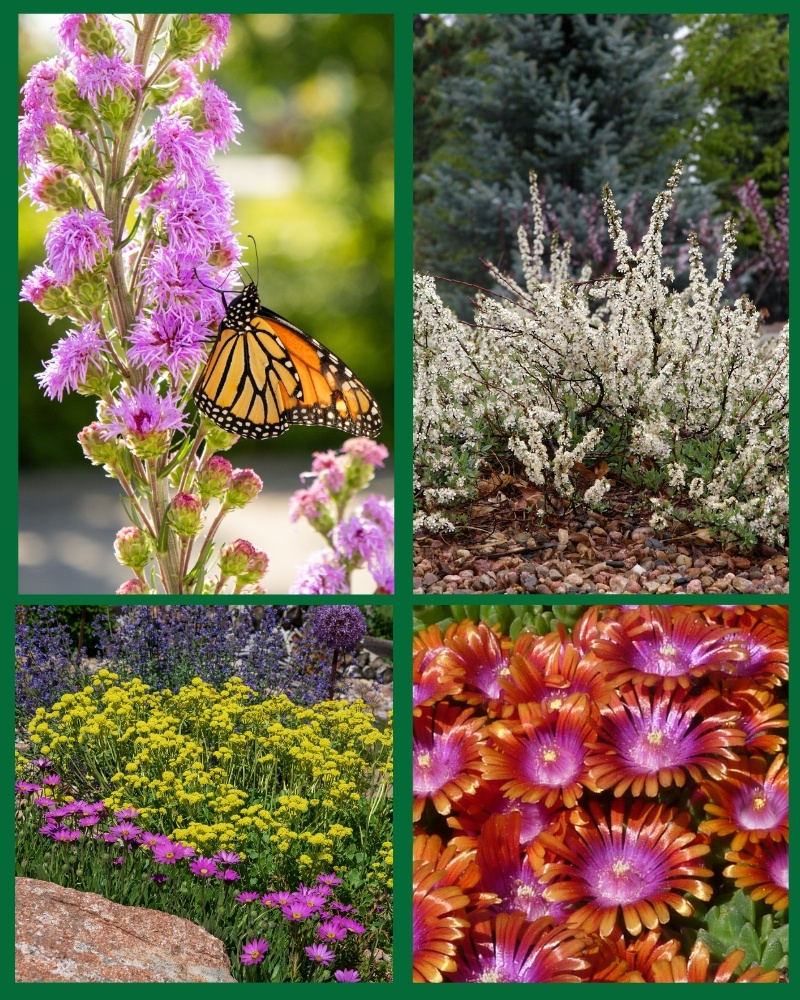Rocky Mountain goldenrod
Solidago multiradiata



Rocky Mountain goldenrod is a small, well-behaved goldenrod with big benefits for pollinators! Its large, golden-yellow flowers feed native bees and butterflies, and it's a host plant for numerous caterpillars. The National Wildlife Federation and Dr. Doug Tallamy consider it to be a keystone plant for much of the western United States. Keystone plants provide significant wildlife and pollinator benefits.
What makes this goldenrod unusual is its size. It only gets 6 to 12 inches tall and wide. Plus, this dwarf goldenrod blooms in late May and June — unlike many goldenrods that bloom in late-summer or fall.
Rocky Mountain goldenrod is native to much of the western United States, including Colorado and Utah. Read the plant story here >
What makes this goldenrod unusual is its size. It only gets 6 to 12 inches tall and wide. Plus, this dwarf goldenrod blooms in late May and June — unlike many goldenrods that bloom in late-summer or fall.
Rocky Mountain goldenrod is native to much of the western United States, including Colorado and Utah. Read the plant story here >
| Plant Type | Perennial |
| Height | 6-12 inches |
| Width | 6-12 inches |
| Flowering Season | May-June |
| Flower Color | Yellow |
| Sun | Sun |
| Water Needs | Dry, moderate |
| USDA Hardiness Zone | Zones 4-9 |
| Soil Type | Clay, Loam, Sandy, Gravelly |
| Deer Resistant | Yes |
| Good for Pollination | Yes |
| Winter Interest | No |
| North American Native | Yes |
| Native Origins | AZ, CA, CO, ID, MT, NM, NV, OR, UT, WA, WY |
| Year Introduced | 2025 |
| Annual Commercial Maintenance | A one-time removal of spent seed heads will maintain a tidy appearance all summer long, if desired. It prefers little or no supplemental fertilizer. |
| 5-10 Year Commercial Maintenance | A one-time removal of spent seed heads will maintain a tidy appearance all summer long, if desired. It prefers little or no supplemental fertilizer. |
| Elevation Guide | Up to 8500 ft. |


